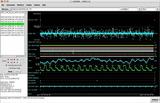Taking care of "First things First"
Once you have successfully completed your online "Instrument Use Agreement", reviewed the "Data Delivery Policy" and signed your "PI Acknowledgment", your are ready to move on to the next step.
Planning is Crucial
Helpful Tips "Straight from the horse's mouth"
"Being able to import your equipment quickly is key to a successful deployment.... so don't wait until the last minute."
PLANNING AHEAD....
"Each country is different, so ask a lot of questions and don't assume anything."


